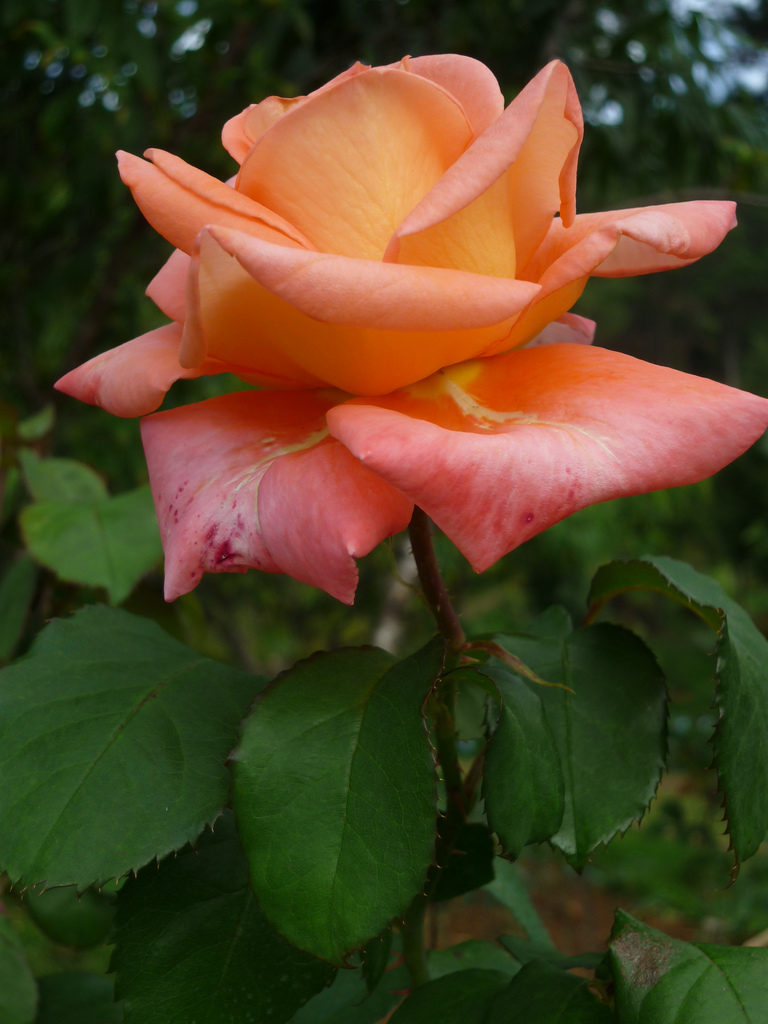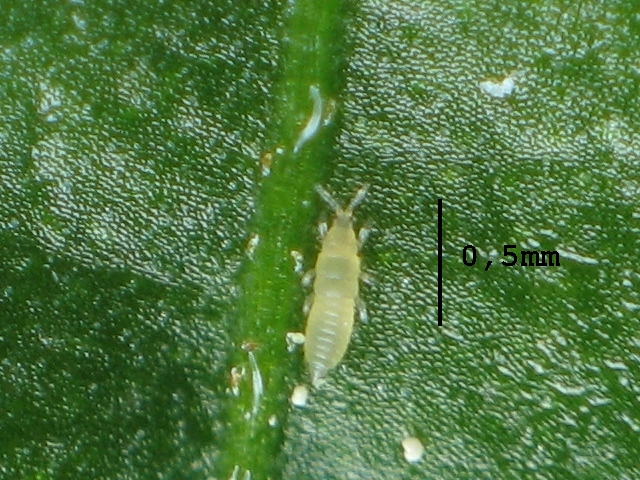
There are over 6000 thrips species sucking the plant life all over the world. Thrips are small insects, only about 1/20″, but they can cause a lot of damage. At maturity, they are yellowish or blackish with fringed wings. Nymphs have a similar shape but lack wings. They are usually yellowish to white. Thrips are poor flyers. As a result, damage often occurs in one part of the plant then slowly spreads throughout it. Thrips cannot fly properly as they are poor in that but can readily spread long distances by floating with the wind or being transported on infested plants. The large thrips feed in large groups and if they are disturbed they leap or fly away. Thrips are barely visible to the untrained eye.
Thrips cause major economic losses in many agricultural systems every year and can have generations around 12 to 15 per year, their life cycle is faster in warmer months.

Thrips are particularly attracted to flowers that are bright in color, where they cause damage such as streaking and scarring of petals, damaging of flowers and flower buds, and incomplete petal expansion. The flowers that produce double layers with many petals and more prone to thrips
Roses are roses and for the longest time they have been honored as the most popular flowers in the world, but if that rose is riddled by thrips then it may lose its traditional charm. They can be tough to get rid of once they have invaded roses.
Western flower thrips are primarily pests of herbaceous plants, but high populations occasionally damage continuously- or late-blossoming flowers on woody plants such as roses. Some plant-feeding thrips are also predaceous on other pests, such as spider mites. In young cotton seedlings in California, western flower thrips is considered beneficial because it feeds on spider mites.
Symptoms in ornamental crops:
- ring spots and line patterns on leaves
- black streaking on veins and stems
- stunting
- death of a growing plant
Get rid of them naturally without using pesticides by using our safe methods.
C Tech Corporation can offer a solution to overcome this problem. Our product Combirepel™ is extremely low toxicity and extremely low hazard and eco-friendly. Combirepel™ is available in the form of the masterbatch, which can be incorporated with polymeric applications like tree guards, pipes, agricultural films, wires, cables, etc. to keep pests at bay.
The product available in the form of liquid concentrate can be mixed in paints in a predetermined ratio and can be applied topically on the applications.
The product available in the form of lacquer can be used as a topical application and can be applied to keep the pest at a distance from the trees.
The product is compliant with RoHS, RoHS2, RoHS3, and REACH and is FIFRA exempted. This product acts through a series of a highly developed intricate mechanisms ensuring that rodents are kept away from the target application.
The product is also effective against other pests thus protecting the plants from other pest attacks.
Combirepel™ is thermally stable and does not degrade on exposure to heat and sunlight. It does not kill or harm the insect but repels them. It does not volatilize and does not degrade the soil. It is RoHS, RoHS2, RoHS3, REACH, APVMA, NEA, EU BPR compliant and FIFRA exempted.
Contact us at technical.marketing@ctechcorporation.com if you’re facing problems with rodents and get best remedies to combat the pest menace.
Also, visit our websites:
http://www.ctechcorporation.com/
http://www.rodrepel.com/
http://www.termirepel.com/
http://www.combirepel.com/
Follow our Facebook pages at:
1] https://www.facebook.com/Combirepel-411710912249274/
2] https://www.facebook.com/Termirepel-104225413091251/
3] https://www.facebook.com/Rodrepel-120734974768048/
Follow us on our Twitter pages at:
1] https://twitter.com/rodrepel
2] https://twitter.com/termirepel
3] https://twitter.com/combirepel
